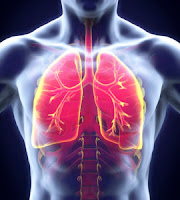What makes pneumonia a deadly respiratory disease?
 |
Image source: health.harvard.edu
|
Septic shock: Bacteria-caused pneumonia can sometimes enter the bloodstream, especially if treatments were ignored. This condition is called Bacteremia, which can lead to septic shock. Septic shock occurs as a reaction to an infection in the blood, which causes a person’s blood pressure to drop down to dangerous levels. It can starve a person’s organs of blood and force them to stop functioning altogether.
Kidney failure: When a person’s kidneys don’t get enough blood, it can lead to kidney failure. Bacteremia or septic shock can cause this as it could prevent a person’s heart from pumping enough blood to a person’s organs. Odds of kidney failure increases for patients who are suffering from other medical conditions other than pneumonia.
 |
Image source: healthline.com
|
Accomplished physician Lisa M. Cannon, M.D. , graduated with a degree in medicine from New York Medical College and earned her fellowship in pulmonary, critical care, and sleep medicine from the renowned Mount Sinai Hospital in New York. To read more about pulmonary health, visit this website.


Comments
Post a Comment